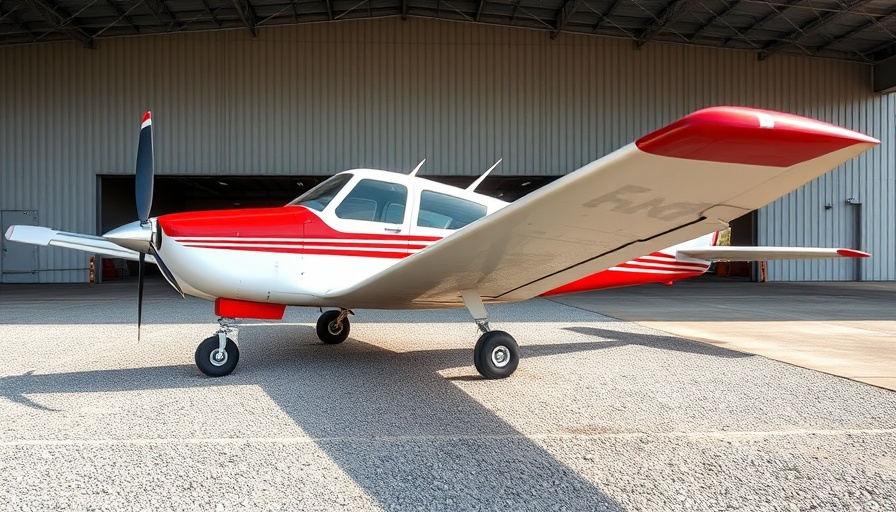
Exploring the Power of the 1963 Cessna 182F Skylane
The 1963 Cessna 182F Skylane stands out in the aviation community, not just as a classic aircraft but as an engaging example of engineering excellence and performance optimization. This beloved model, known for its capabilities and reliability, is now even more appealing thanks to a powerful engine swap. Many pilots appreciate the Skylane for its versatility, making it an ideal companion for flying families, but the upgraded engine transforms it into a top-tier performer in terms of power and efficiency.
What Makes the Skylane a Top Pick?
Unlike its smaller cousin, the Cessna 172, the Skylane has been revered since its launch in the mid-1950s as a robust all-rounder. This is largely due to its ability to handle large loads and operate efficiently from short runways. The newly enhanced powerplant, an IO-520 rated at 280 hp, provides a significant performance boost, offering pilots the ability to reach their destinations more promptly and comfortably. For the discerning buyer, this aircraft priced at $160,000 on AircraftForSale is an exceptional choice, especially considering the benefits of its upgraded engine.
Performance Like You've Never Seen
Performance upgrades, like those offered by Texas Skyways, have become popular among Skylane owners seeking more power. The original Continental O-470 engine was competent, but the new IO-520 enhances the flying experience, echoing the results of other engine upgrades, such as those for the Cessna 172. Pilots comparing the base models will find that the 182 becomes a different beast entirely with its additional horsepower. It’s like converting a solid sedan into a sports car, giving it the pep and efficiency required for a true flying experience.
Equipped for Success
This specific Cessna 182F boasts 4,459 hours on its airframe and 1,362 hours on the upgraded engine. The range of avionics included—from a Garmin GMA 340 audio panel to an S-TEC 30 autopilot—ensures that any pilot can navigate with confidence and ease. These features not only enhance safety but also ensure that long flights are less exhausting and more enjoyable, allowing families to travel together with peace of mind.
Future of the Cessna 182F Skylane
As the aviation world continues to evolve, the importance of such upgrades is becoming more significant. Conversion options like the one this Skylane offers indicate a growing trend among aviation enthusiasts towards enhancing their aircraft for better performance and efficiency. For those considering flying careers or recreational flying opportunities, knowing that they can invest in a capable aircraft like the Cessna 182F can open new horizons. This aircraft doesn’t just represent the joy of flying; it signifies how far technology can take the passions of aviation enthusiasts.
Whether you’re looking to learn to fly or seeking a capable family aircraft, the benefits of a Cessna 182F with an upgraded engine spelling out its promising future can't be overlooked. Soaring through the skies with a well-balanced aircraft enhances not just the flight experience, but enriches bonding moments with family and friends.
Get Involved in Aviation
If you’re feeling inspired by this incredible example of aviation, consider what it takes to learn to fly. With an energetic community and ample resources available, now is an excellent time to take that first step toward the skies. Whether you’re interested in pursuing a hobby or a career in aviation, the adventure awaits you!
 Add Row
Add Row  Add
Add 




Write A Comment